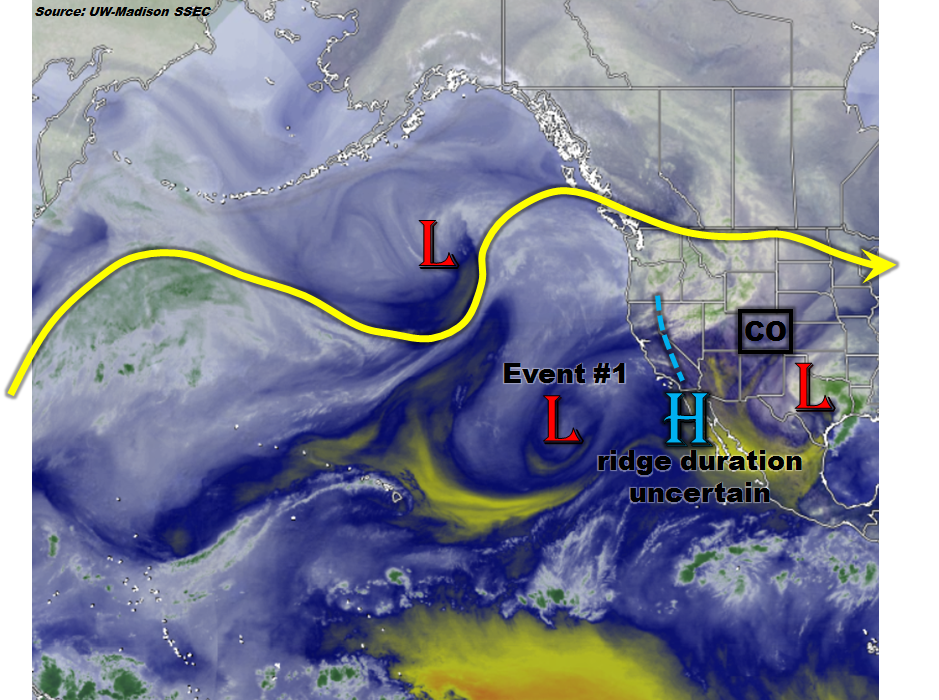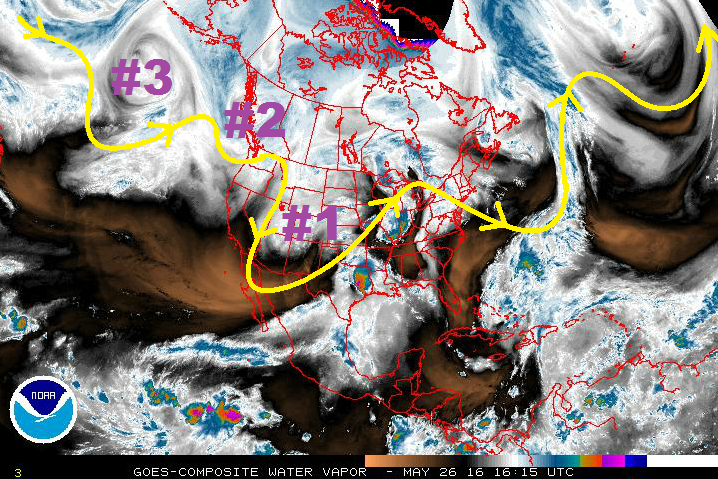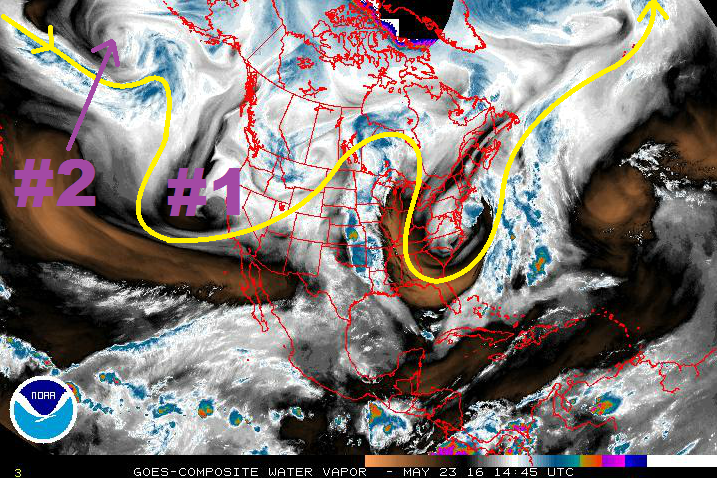Issue Date: Thursday, June 2nd, 2016
Issue Time: 12:45PM MDT
As discussed in today’s (6/2) Flood Threat Bulletin and shown in the expanded water vapor image, below, a ridge has begun to expand across the US west coast. Under the ridge, temperatures will certainly feel like summer with parts of Arizona forecast to be 5-15F above normal for the next 3-5 days. For Colorado, the ridge will not be an intense heat producer as much as it will block the upstream flow from disturbances. While in the past few days, it appeared that the ridge could setup for a prolonged period of time (7+ days), this is no longer certain. Instead, several low-pressure disturbance have the potential to propagate and weaken the ridge during the middle part of next week (6/7 – 6/9).
Of particular note are the labeled low-pressure disturbances in the eastern Pacific Ocean. These are forecast to move towards the western US coast and could dent the ridge. However, the main word here is “could”. At this moment, while there is certainly a chance that the disturbances make it all the way into Colorado, this does not appear like a given or even probable. For example, the spaghetti plot below shows the spread in GFS ensemble guidance for the position of the southern disturbance for mid next-week. While most of the ensembles have the slight trough feature that identifies the disturbance near the UT/CO border, it is also clear that the larger-scale pattern shows a ridge. This kind of setup is not particularly conducive to heavy rainfall chances across the state, especially because the extent of sufficient return flow (i.e. moisture feed from the Gulf of Mexico) is in doubt. A similar pattern follows for week 2 of the forecast period: the ridge is largely intact, but several disturbances could modulate its strength. However, no identifiable events exist at this time.
Below we describe next week’s event in more detail.
Event #1: Tuesday 6/7 – Thursday 6/9
No Apparent Flood Threat as ridge strength and duration is uncertain
The cut-off low and large-scale trough features currently found in the eastern Pacific will progress east and potentially begin to flatten the ridge located over the western Rocky Mountain states. One or both of these features could penetrate far enough east to organize shower and thunderstorm activity mainly over northern and northeastern Colorado. However, at this moment, it does not appear that these events will be able to generate widespread precipitation above 1 inch. Thus, no precipitation map is provided today.










